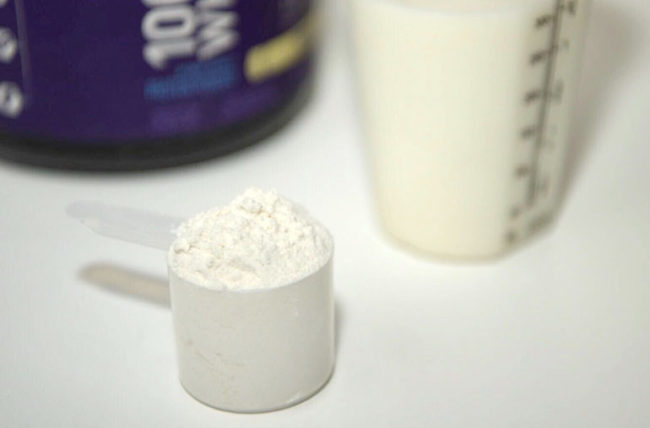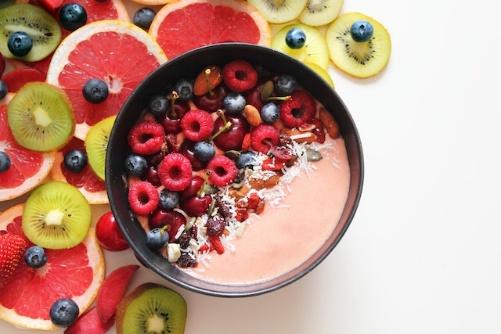After the great demand and marketing of protein-based food supplements, whey is undoubtedly the star of all, the best seller, and the one that creates the most confusion and questions.
We will talk about it, briefly and, its differences and what to look for if we want to consume a good whey protein.
We all know that whey is a protein obtained from milk.
Which, it is a food that provides us with proteins of animal origin and of high biological value, with all its essential amino acids and an amino acid profile greater than other protein sources; easy to digest and take since, in a normal diet, it is difficult for us to find in adequate amounts since only 20% of the protein in milk is whey.
Given the large studies carried out on this type of protein, and its great repercussion and benefits on health, at the dietary level, it is not only consumed by athletes who want to maintain, restore or increase their daily protein capital. Rather, it is marketed for people with eating problems or disorders, diet regimens, diseases, or certain pathologies. (Growing children, adolescents, seniors, hospitalized.)
Dairy whey is also used in the food industry as an additive to dozens of foods.
Such as dairy products, yogurts, and all kinds of desserts increase this nutrient in the final product and create more creaminess.
Meat and sausage products, pastries, and sweets make the products more consistent and improve their texture and appearance.
Different types of whey.
* Dairy whey concentrate or, in English, whey protein concentrate. WPC
This type of whey is the most economical and common; it gives between 20, 40, and 60 and is the most used at a sports level, with 70 to 80% of the protein in its pure state, without mixing with flavor, dyes, or other additives.
This type of whey is the one that contains the most lactose (natural carbohydrate that milk contains) and fat.
The one with the worst aminogram and the worst digestibility.
*Isolate from dairy whey or olimp whey protein isolate. WPI
This type of whey is more expensive since it is obtained by a longer filtering process, making the final product more expensive; it also provides us with a higher percentage of protein, around 90% in its purest state and the best cases.
It is practically free of lactose and fat and contains the best amino acid profile and excellent digestion.
*Whey concentrate and isolate, a mixture of the previous two, and each manufacturer or distributor makes its mixture and percentages.
*Hydrolyzed whey isolate. WPH
This type of whey can be obtained from the concentrate, the isolate, or both. The hydrolyzed isolate is the cleanest and with the highest percentage of protein.
Same quality and aminogram as an isolate, but it has been subjected to enzymatic hydrolysis. This process breaks the protein into smaller peptide bonds, making it easier to digest and absorb. This protein is ideal for people with digestive problems since being “predigested” makes this digestive process easier.
Its use is oriented and ideal for pre-intra- and post-workout sports training or when a quick supply of protein is needed for a prolonged fast, given its rapid digestion and supply of amino acids.
This hydrolyzed protein has a marked effect on blood glucose, to a greater extent than the isolated protein, since it has insulinotropic properties, an effect desired at certain times of the day by athletes to improve recovery, protein synthesis, and glycogen resynthesis if mixed with carbs.
It has a small drawback: due to the process of obtaining it, enzymatic hydrolysis, even though it is the most innovative, causes a small part of the bioactive fractions of the serum to be lost. This can be corrected by mixing it with an isolate, and we will benefit from both results in terms of health, recovery, and protein synthesis.
*Additives and fillers used in protein-based food supplements and other supplements.
Most companies use various additives to improve the texture, appearance, flavor, color, and dissolution. Or to improve, add, or complete proteins to the total percentage of the product. This is an error or strategy to lower costs, and we will discuss how to avoid it before buying a product.
Some people do not tolerate additives well and have gastrointestinal problems or may have them in the future due to excessive consumption since these kinds of additives are mostly artificial chemicals that damage health.
Many people complain of discomfort or not doing well with this Pre-workout protein supplement, especially in low-cost products. This may be for one or more reasons.
First, you must trust a good brand and raw material.
Second, analyze the label or consult with the distributor, adviser, or manufacturer with any questions about its additions or problems that we have before buying; we will avoid wasting money and feeling cheated.
- Among the most used additives, we find ourselves and that we should avoid.
- Some of the sweeteners, colors, and thickeners to avoid:
- Aspartame, acesulfame k, saccharin, cyclamate.
- Dyes e 102, (tartrazine) e 110, e122, e 123, e 124, e 128, e 129, e 133. (brilliant blue)
- Xanthan gum, carboxymethylcellulose, carrageenan, palm fat, or hydrogenated vegetable fat.
- These additives cause damage to health and damage the intestinal flora, making the absorption of nutrients less efficient.
- Sweeteners to be taken cautiously (sucralose, maltitol) damage the intestinal microflora.
- Cautious ( xylitol, stevia ) produces flatulence and diarrhea. It may cause a hypoglycemic effect.
Other additives or fillers used that still do not harm but call into question the quality of these protein supplements are maltodextrin, adding other types of lower-cost proteins to the formula such as milk protein (powdered milk), or amino acids such as glycine, taurine or creatine, which are very cheap and are added to increase the total percentage of a protein and save on complete protein, which is the main and most expensive raw material.
*Quality and raw material.
There are numerous companies that manufacture very good quality whey, but if we had to highlight one in particular, Carbery would undoubtedly be the first option.
Carbery is located in Northern Ireland; they are a world leader in producing and manufacturing whey.
- Recognized worldwide for its quality and its numerous prizes and awards.
- The raw material is obtained from their pasture-raised and pasture-fed cows.
Maintaining the highest quality, traceability, and hygiene controls and using the best methods and technology for collecting milk and obtaining whey naturally and without denaturing, guaranteeing the best aminogram, digestibility, and dissolution.
Carbery is the only company that guarantees the commercialization of its 90% isolates, both the pure Isolac isolate and the Optipep hydrolyzed isolate, discarding any batch with less than 90% content.
Perfect nutrition, bets on quality, buying the best raw materials for its products such as:
Iso 100. Colac 100% without additives
Optiwhey. Isolac and Optipep are free of fillers or additives. 100% pure neutral.
Giving the highest real percentage of protein, free of lactose, fat, and any additive that lowers the total percentage of protein or lowers its cost.
For all athletes or not, they want to increase their daily protein intake and improve their muscles, performance, recovery, and health.
Summary and tips when buying protein supplements.
Many people, athletes, fans, or people who care for their health consume a wide range of daily supplements.
Professional athletes and competitors, from their experience, know that leading a competitive and disciplined sporting life is difficult. Training, eating correctly, and taking a daily supplement cause stress to the body, especially at the gastrointestinal and immune levels. You have to be meticulous with everything that is ingested. We know that choosing a healthy diet and adequate supplementation is the key to staying healthy and with maximum performance throughout the years.
For those who are just starting out or for those who already consume food supplements, it seems to them that all proteins are the same “whey whey whey,” and they go for the low-cost ones; these are their differences.
- Low-quality whey, additives, and fillers.
- Low-quality raw material, as well as obtaining hygiene treaties.
- Protein percentage between 70 -80%
- With flavor, its percentage drops to 60% or less, according to analysis.
Artificial flavors, aromas, and other additives that put health at risk, gas, bloating, fluid retention, long-term intestinal problems, and intolerances.
Additives of cheap amino acids to increase protein percentage.
To complete the dose of one shot, you must add 70g and more per shake to obtain a decent amount, when with a brand like neutral Carbery, 30g is enough, which in the end, is more expensive to take low-cost protein.





I agree with you that whey protein is a convenient and effective way to supplement your protein intake, especially if you are trying to build muscle, lose weight, or improve your overall health.
Expert Landscaping solutions Murrieta CA
js加密 hello my website is js加密
Trận AC hello my website is Trận AC
bản nhỏ hello my website is bản nhỏ
rosé lisa hello my website is rosé lisa
Good Parts hello my website is Good Parts
coc builder hello my website is coc builder
Advancement of hello my website is Advancement of
satinduk bais hello my website is satinduk bais
casino ve hello my website is casino ve